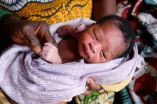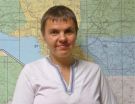(Press-News.org) Tumour cells can accumulate hundreds or even thousands of DNA mutations which induce the growth and spread of cancer. The number and pattern of mutations differs according to the type of tumour, even among those that are classified as part of the same type of tumours. This complexity, which researchers were not aware of just a few years ago, calls for new tools to filter relevant genetic information for the implementation and development of personalised therapies targeted at specific characteristics within each individual tumour.
Researchers led by Manuel Hidalgo, Vice-Director of Translational Research at CNIO, have developed a new strategy to personalised medicine in advanced cancer patients with a poor prognosis. The study has been published in the journal Clinical Cancer Research. Applying this new tool, the treatments induced clinical responses in up to 77% of patients, either through the stabilisation of their condition or through a partial clinical response.
During the first phase, the authors analysed the genetic signature of the tumours –specifically, the hundreds of millions of letters that make up the exome; the part of the genome whose information produces proteins– in 23 patients suffering from advanced cancers, such as pancreatic adenocarcinomas and colon cancer. By using whole exome sequencing and bioinformatics analyses, researchers picked out mutations that could play an important role in the growth and spread of tumours.
The second part of the study involved the use of Avatar mice to study potentially effective treatments according to the patient's genetic signature. As Elena Garralda, predoctoral researcher from Hidalgo's Group, points out, avatar mice are "one of the key aspects of our research."
AVATAR MICE: A TESTING GROUND FOR DRUGS
Avatar mice are used as a testing ground, with each patient having their own equivalent animal, in order to study the effectiveness of drugs under real conditions: if the drug works in the avatar, the likelihood of it also working in the patient is very high.
Therefore, the treatments that worked best in the avatar mice were the ones given to patients. The results showed clinical benefit, either the stabilisation of the disease or a partial clinical response, in up to 77% of patients.
"We have demonstrated that it is possible to apply our personalised cancer treatment strategy to the clinic", says Garralda, adding: "as we learn more about the genetic information obtained from cancer exome sequencing, future clinical trials will allow for the inclusion of patients with specific genetic alterations, and therefore a better access to cancer drugs."
FUTURE ASSAYS ON PANCREATIC CANCER
Currently, one the main objectives for the team is to study the efficiency of the procedures in a larger number of patients with advanced pancreatic cancer, thereby comparing them to standard treatments.
Pancreatic cancer often has a poor prognosis, with survival rates of less than 1 year. It is a complex and heterogeneous disease, meaning that the personalised study of the most relevant mutations in tumour growth (driver mutations) could be a promising strategy in the search for new treatments.
INFORMATION:
Reference article:
Integrated Next Generation Sequencing and Avatar Mouse Models for Personalized Cancer Treatment. Garralda E, Paz K, López-Casas PP, Jones S, Katz A, Kann LM, López-Ríos F, Sarno F, Al-Shahrour F, Vasquez D, Bruckheimer E, Angiuoli SV, Calles A, Diaz LA, Velculescu VE, Valencia A, Sidransky D, Hidalgo M. Clinical Cancer Research (2014). doi: 10.1158/1078-0432.CCR-13-3047
CNIO team presents a new strategy to personalise cancer therapies
Whole genome sequencing along with personalised treatment based on the 'Avatar' mouse model could improve clinical response in patients with advanced cancer
2014-04-29
ELSE PRESS RELEASES FROM THIS DATE:
Mathematicians trace source of Rogers-Ramanujan identities, find algebraic gold
2014-04-29
Mathematicians have found a framework for the celebrated Rogers-Ramanujan identities and their arithmetic properties, solving another long-standing mystery stemming from the work of Indian math genius Srinivasa Ramanujan.
The findings, by mathematicians at Emory University and the University of Queensland, yield a treasure trove of algebraic numbers and formulas to access them.
"Algebraic numbers are among the first numbers you encounter in mathematics," says Ken Ono, a number theorist at Emory "And yet, it's surprisingly difficult to find functions that return them ...
Proving uncertainty: New insight into old problem
2014-04-29
WASHINGTON D.C., April 29, 2014 -- Nearly 90 years after Werner Heisenberg pioneered his uncertainty principle, a group of researchers from three countries has provided substantial new insight into this fundamental tenet of quantum physics with the first rigorous formulation supporting the uncertainty principle as Heisenberg envisioned it.
In the Journal of Mathematical Physics, the researchers reports a new way of defining measurement errors that is applicable in the quantum domain and enables a precise characterization of the fundamental limits of the information accessible ...
Poor QOL doesn't predict low survival in high-risk lung cancer patients undergoing surgery
2014-04-29
Toronto, ON, Canada, April 29, 2014 – Quality of life (QOL) is rarely reported in surgical publications, yet it can be an important metric that can be of use to physicians and patients when making treatment decisions. Prior studies of average-risk patients undergoing lobectomy suggested that low baseline QOL scores predict worse survival in patients undergoing non-small cell lung cancer surgery. The results of a multi-center, longitudinal study of high-risk lung cancer patients who underwent sublobar resection counters this idea, finding that poor baseline global QOL scores ...
Mother's diet affects the 'silencing' of her child's genes
2014-04-29
A mother's diet before conception can permanently affect how her child's genes function, according to a study published in Nature Communications.
The first such evidence of the effect in humans opens up the possibility that a mother's diet before pregnancy could permanently affect many aspects of her children's lifelong health.
Researchers from the MRC International Nutrition Group, based at the London School of Hygiene & Tropical Medicine and MRC Unit, The Gambia, utilised a unique 'experiment of nature' in rural Gambia, where the population's dependence on own grown ...
Genealogy and biogeography meet personalized medicine
2014-04-29
Biogeographical data is useful in screening for disease risk and drug sensitivity associated with certain ethnic groups. A team of researchers, including an investigator from Children's Hospital Los Angeles, has developed a tool to accurately identify the biogeography of worldwide individuals. Previous tools were accurate in identifying place of origin within homogeneous European populations but highly inaccurate for places with significant immigration, such as the U.S.
Tatiana Tatarinova, PhD, of The Saban Research Institute of Children's Hospital Los Angeles, Eran ...
Screening out: What are parents doing to limit screen time for young children?
2014-04-29
ANN ARBOR, Mich. – About 25 percent of parents who have children aged two to five say their children get three or more hours of entertainment screen time a day, well beyond recommended limits, according to a new poll from the University of Michigan.
In the latest University of Michigan Mott Children's Hospital National Poll on Children's Health, a little more than half of those parents do try to set some limits by location: banning media devices from places like the bedroom or at mealtime.
In 2013, the American Academy of Pediatrics issued updated guidelines to recommend ...
People rely on what they hear to know what they're saying
2014-04-29
You know what you're going to say before you say it, right? Not necessarily, research suggests. A study from researchers at Lund University in Sweden shows that auditory feedback plays an important role in helping us determine what we're saying as we speak. The study is published in Psychological Science, a journal of the Association for Psychological Science.
"Our results indicate that speakers listen to their own voices to help specify the meaning of what they are saying," says researcher Andreas Lind of Lund University, lead author of the study.
Theories about how ...
NOAA reports show strong economic gains from fishing, continued improvement in fish stocks
2014-04-29
U.S. commercial and recreational saltwater fishing generated more than $199 billion in sales in 2012, a gain of seven percent over the previous year, with the economic impact of fishing jobs increasing three percent from 2011 to 2012, according to a new NOAA Fisheries economics report.
Further, two more fish stocks were rebuilt to target levels in 2013, bringing the number of rebuilt U.S. marine fish stocks to 34 since 2000, according to another NOAA Fisheries report also released today.
Taken together, the two reports, Fisheries Economics of the United States 2012 ...
RI Hospital: Medicare patients with dementia 20 percent more likely to be readmitted
2014-04-29
PROVIDENCE, R.I. – A review of more than 25,000 admissions of Medicare beneficiaries to Rhode Island hospitals has found that patients with a documented diagnosis of dementia are nearly 20 percent more likely to be readmitted within 30 days than those without dementia. The study by Rhode Island Hospital researchers is published online in advance of print in the journal Archives of Gerontology and Geriatrics.
"Persons with dementia may have difficulties comprehending and following important discharge instructions, (e.g. medication changes, decision making, self care)," ...
Model sheds new light on sports-related brain injuries
2014-04-29
A new study has provided insight into the behavioral damage caused by repeated blows to the head. The research provides a foundation for scientists to better understand and potentially develop new ways to detect and prevent the repetitive sports injuries that can lead to the condition known as chronic traumatic encephalopathy (CTE).
The research – which appears online this week in the Journal of Neurotrauma – shows that mice with mild, repetitive traumatic brain injury (TBI) develop many of the same behavioral problems, such as difficultly sleeping, memory problems, ...
LAST 30 PRESS RELEASES:
What determines the fate of a T cell?
Candida auris: genetic process revealed which could be treatment target for deadly fungal disease
Groundbreaking discovery turns household plastic recycling into anti-cancer medication
Blocking a key inflammatory pathway improves liver structure and vascular function in cirrhosis, study finds
Continuous spread: Raccoon roundworm detected in nine European countries
HKUST Engineering researchers developed a novel photodetector to enhance the performance of on-chip light monitoring
Strategic river sensors could have forewarned of Texas Camp flood disaster
Drone sampling of whale breath reveals first evidence of potentially deadly virus in Arctic
Roman soldiers defending Hadrian’s Wall infected by parasites, study finds
Pinochet’s prisoners were tormented with music but still found solace in it, a new book reveals
Fertility remains high in rural Tanzania despite access to family planning
AI-assisted device can improve autism care access
Kinetic careers
Uncovering how parasitic plants avoid attacking themselves to improve crop resistance
Nanoparticle vaccine strategy could protect against Ebola and other deadly filoviruses
Study finds brain care score can predict risk of stroke across racial groups
Key lung immune cells can intensify allergic reactions
Do hormones explain why women experience more gut pain?
New materials conduct ions in solids as easily as in liquids
Breakthrough of the Year: Renewable energy begins to eclipse fossil fuel-based sources
LLM use is reshaping scientific enterprise by increasing output, reducing quality and more
Introducing LightGen, a chip for ultra-fast, ultra-efficient generative AI
Astronomers see fireworks from violent collisions around nearby star
ACC/AHA issue new guideline on managing congenital heart disease in adults
Cosmic crash caught on camera
Is talented youth nurtured the wrong way? New study shows: top performers develop differently than assumed
Ants: An untapped resource in the development of antibiotics?
Archaeologists use AI to create prehistoric video game
Mitochondria migrate toward the cell membrane in response to high glucose levels
Tiny viral switch offers hope against drug-resistant bacteria
[Press-News.org] CNIO team presents a new strategy to personalise cancer therapiesWhole genome sequencing along with personalised treatment based on the 'Avatar' mouse model could improve clinical response in patients with advanced cancer



